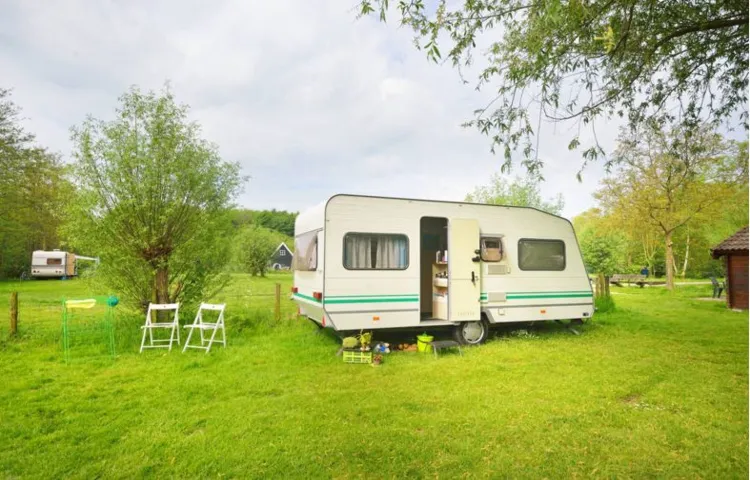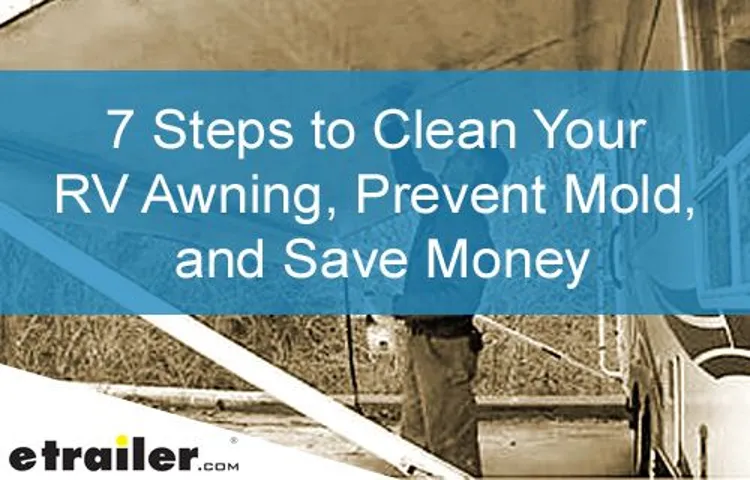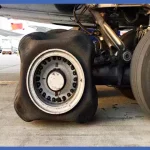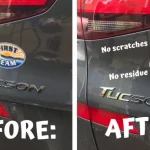Are you ready to hit the road in your RV and embark on an exciting adventure? Before you set off, it’s important to make sure your vehicle is in top shape, and that includes cleaning and maintaining your RV awning. Over time, mold and mildew can build up on your awning, not only making it look unsightly, but also potentially causing damage. But fear not, because cleaning mold from your RV awning is easier than you might think.
In this blog post, we’ll walk you through the steps to remove mold from your awning, so you can enjoy a clean and fresh living space wherever your travels take you. So grab your cleaning supplies and let’s get started!
Table of Contents
Understanding the Dangers of Mold
If you’re an RV owner, you know how important it is to keep your vehicle clean and well-maintained. One area that often gets neglected is the awning. While it may not seem like a big deal, a dirty awning can actually pose some serious health risks.
Mold, in particular, can be a major problem. Not only can it cause allergic reactions and respiratory issues, but it can also spread throughout your RV if left untreated. So, how do you clean mold from your RV awning? First, you’ll want to start by removing any loose debris, such as leaves or dirt, from the awning.
You can use a broom or a leaf blower to do this. Once the surface is clear, mix a solution of warm water and mild detergent in a bucket. Using a soft brush or sponge, scrub the affected areas of the awning with this solution.
Be sure to scrub gently to avoid damaging the fabric. After scrubbing, rinse the awning thoroughly with clean water. You can use a hose or a pressure washer for this step.
Make sure to remove all traces of the detergent solution. Once the awning is clean, it’s important to let it dry completely before retracting it. This will help prevent any moisture from getting trapped and creating the perfect breeding ground for mold.
To further prevent mold growth on your RV awning, it’s a good idea to regularly inspect and clean it. Check for any signs of mold or mildew and address them immediately. Additionally, make sure to keep the awning dry whenever possible.
The health risks of mold in your RV
One of the most common issues that RV owners face is the presence of mold. Mold is a type of fungi that grows in damp and humid environments, making RVs an ideal breeding ground. While it may seem harmless at first, mold can actually pose serious health risks to both you and your loved ones.
Understanding these dangers can help ensure that you take the necessary steps to prevent and address mold growth in your RV. So, let’s dive in and take a closer look at some of the health risks associated with mold.

The potential damage to your RV awning
RV awnings are a great addition to any recreational vehicle, providing shade and protection from the elements. However, they can also be a breeding ground for mold if not properly cared for. Mold is a type of fungus that thrives in damp and humid environments, which makes the fabric of your RV awning an ideal place for it to grow.
If left unchecked, mold can cause serious damage to your awning, as well as pose health risks to you and your family. The spores released by mold can cause allergies, respiratory issues, and even infections. Additionally, mold can weaken the fabric of your awning, leading to tears and holes that will need to be repaired or replaced.
To prevent the growth of mold on your RV awning, it’s important to regularly clean and thoroughly dry it after use, especially if it has been exposed to rain or moisture. By taking these simple steps, you can protect your investment and ensure that your awning lasts for years to come.
Identifying Mold on Your RV Awning
Cleaning mold from an RV awning is essential for maintaining a hygienic and visually appealing outdoor space. Mold can be unsightly, cause a musty odor, and even lead to health issues if left untreated. So, if you’ve noticed mold growing on your RV awning, it’s important to take action.
The first step is to identify the mold. Mold typically appears as black or green spots or patches on the fabric or surface of the awning. Once you’ve identified the mold, you can proceed with cleaning it.
There are several methods to clean mold from an RV awning, including using a mixture of bleach and water, vinegar, or a commercial mold and mildew remover. It’s essential to follow the instructions of the cleaning solution you choose and to thoroughly rinse the awning after cleaning to remove any residue. Regularly inspecting and cleaning your RV awning can help prevent mold growth and extend its lifespan.
Common signs of mold growth
RV awnings are a great addition to any recreational vehicle, providing shade and protection from the sun. However, like any outdoor surface, they are susceptible to mold growth. Mold can be unsightly and can also pose health risks, so it’s important to identify and address any mold growth on your RV awning.
There are several common signs of mold growth to be aware of. One of the most obvious signs is discoloration. If you notice any dark spots or patches on your awning that weren’t there before, it’s likely mold.
Another sign is a musty odor. Mold has a distinct smell, similar to dampness or mildew. If you notice an unpleasant odor coming from your awning, it’s likely mold.
Finally, if you see any fuzzy or slimy patches on your awning, that’s a sure sign of mold. These patches can be black, green, or even white in color. If you notice any of these signs, it’s important to take action to clean and prevent further mold growth on your RV awning.
How to properly inspect your RV awning for mold
RV awnings can provide a great deal of comfort and shade while camping, but they can also be a breeding ground for mold if not properly maintained. Mold growth on your RV awning can not only be unsightly, but it can also cause health issues for you and your family. That’s why it’s important to regularly inspect your awning for any signs of mold.
One of the easiest ways to identify mold on your RV awning is by the appearance of black or green spots. These spots may be scattered across the surface of the awning, or they may form larger patches. Mold can also give off a musty odor, so if you notice a strange smell coming from your awning, it could be a sign of mold growth.
To properly inspect your RV awning for mold, start by extending the awning fully. You’ll want to get a close look at both the top and underside of the awning fabric. Use a flashlight to examine any hard-to-reach areas and look for any signs of mold or mildew.
Pay special attention to any areas of the awning that have been folded or creased, as these are prime spots for mold growth. Check the seams and stitching for any signs of discoloration or mold as well. If you do find mold on your RV awning, it’s important to take action right away.
Mold can spread quickly and cause damage to the fabric of your awning. Start by using a brush or soft cloth to remove any loose mold spores from the surface of the awning. Then, mix a solution of one part bleach to four parts water and use a sponge or scrub brush to gently clean the affected areas.
Make sure to rinse the awning thoroughly with clean water afterwards to remove any residue. Prevention is key when it comes to mold on your RV awning. Regularly clean and dry your awning to prevent mold from growing in the first place.
Preparing Your RV Awning for Cleaning
Cleaning mold from your RV awning is an essential step to maintain its functionality and appearance. Before you begin the cleaning process, it’s important to prepare your awning properly. Start by extending the awning fully to ensure that you have enough space to work with.
Next, remove any loose debris like leaves or dirt by gently sweeping it off with a broom or using a pressure washer on a low setting. Once the awning is clear of debris, inspect it closely for any signs of mold or mildew growth. If you notice any, it’s crucial to address it promptly to prevent further damage.
By taking the time to prepare your RV awning before cleaning, you can ensure a more effective and successful cleaning process.
Gathering the necessary cleaning supplies
When it comes to cleaning your RV awning, the first step is gathering the necessary cleaning supplies. Having the right tools will make the cleaning process much easier and more efficient. So, what exactly do you need? Well, it’s always a good idea to start with a gentle cleaner that is specifically designed for awnings.
This will help remove any dirt, grime, or mildew that may have built up over time. You’ll also want to have a brush or broom with soft bristles to gently scrub the awning. A hose with a spray nozzle attachment is also essential for rinsing off the cleaner once it’s been applied.
Additionally, it’s a good idea to have a ladder on hand in case you need to reach higher areas of the awning. By ensuring you have all the necessary supplies, you’ll be well-prepared to tackle the task of cleaning your RV awning.
Taking safety precautions
As an RV owner, it’s important to take safety precautions when it comes to cleaning and maintaining your awning. One of the first steps in preparing your RV awning for cleaning is to ensure that the area around the awning is clear of any obstacles. This means removing any chairs, tables, or other items that may be in the way.
By doing this, you reduce the risk of tripping or falling while cleaning. Another important precaution to take is to check the weather forecast before starting the cleaning process. It’s best to clean the awning on a dry and sunny day to ensure that it dries properly and to prevent slips or falls on wet surfaces.
By taking these safety precautions, you can ensure a safe and efficient awning cleaning process.
Cleaning the Mold off Your RV Awning
Cleaning mold off your RV awning is an important task to ensure the longevity and appearance of your vehicle. Mold can easily grow on your awning due to its constant exposure to the elements and the moisture that can accumulate. To clean the mold, start by mixing a solution of water and mild dish soap in a bucket.
Then, using a soft-bristle brush or sponge, gently scrub the affected areas of the awning. Be sure to apply enough pressure to remove the mold, but not so much that you damage the fabric. Rinse the awning thoroughly with clean water to remove any soap residue.
Finally, allow the awning to air dry completely before retracting it. Regular cleaning and maintenance will not only keep your RV awning looking great, but will also help prevent mold growth in the future.
Removing loose debris and dirt
RV awnings can accumulate mold and mildew over time, especially if they are not properly maintained or stored. Cleaning off this unsightly growth is important not only for the appearance of your RV but also for its longevity and overall cleanliness. One of the first steps in cleaning mold off your RV awning is to remove any loose debris and dirt that may be sitting on the surface.
This can be done by gently sweeping the awning with a broom or using a soft brush to brush away any loose particles. By doing this, you are ensuring that the mold removal process is more effective and the cleaning solution you use can penetrate deeper into the surface. Plus, removing loose debris and dirt also helps to prevent scratches or damage to the awning material during the cleaning process.
Using a mold-fighting solution
Cleaning the Mold off Your RV Awning One common problem that many RV owners face is mold on their awning. Mold not only looks unsightly but can also cause health issues if left untreated. Thankfully, there are mold-fighting solutions available that can help you get rid of this pesky problem.
One option is to use a commercial mold and mildew cleaner. These cleaners are specifically designed to tackle mold and can be found at your local RV supply store. To use, simply spray the cleaner onto the affected area and let it sit for a few minutes.
Then, scrub the mold away using a brush or sponge. Make sure to rinse the awning thoroughly afterwards to remove any residue. Another option is to make your own mold-fighting solution using household products.
A mixture of vinegar and water can be an effective and affordable way to clean mold off your RV awning. Simply mix equal parts vinegar and water in a spray bottle and apply to the affected area. Let it sit for a few minutes before scrubbing away the mold.
In addition to using a mold-fighting solution, it’s important to prevent mold from growing in the first place. One way to do this is to regularly clean your RV awning with a mild detergent and water. This will help remove any dirt or debris that can encourage mold growth.
Additionally, make sure to thoroughly dry the awning after cleaning to prevent moisture from lingering and promoting mold growth. Overall, cleaning mold off your RV awning is an important task that should not be overlooked. By using a mold-fighting solution and taking preventative measures, you can keep your awning looking clean and mold-free.
Scrubbing the affected areas
When it comes to maintaining your RV awning, one of the most common issues you may face is mold growth. Mold can quickly spread on the fabric of your awning, not only making it look unsightly but also posing potential health risks. To tackle this problem, it’s essential to give your awning a thorough cleaning.
Start by scrubbing the affected areas with a mixture of mild soap and water. Use a soft-bristled brush or sponge to gently scrub away the mold. Be sure to pay extra attention to any visible mold spots or stains.
Make sure to rinse the awning thoroughly after scrubbing to remove any soap residue. Allow the awning to air dry completely before retracting it. By regularly cleaning your RV awning and addressing any mold growth promptly, you can keep it looking fresh and mold-free for many camping adventures to come.
Preventing Mold Growth on Your RV Awning
Cleaning mold from your RV awning is an important task that should not be overlooked. Mold can not only cause damage to your awning, but it can also be harmful to your health. To prevent mold growth, it is essential to regularly clean your awning and take measures to inhibit mold growth.
One effective way to clean mold from your RV awning is by using a mixture of water and vinegar. Start by removing any loose debris or dirt from the awning. Then, mix equal parts water and vinegar in a spray bottle.
Spray the mixture onto the affected areas of the awning and let it sit for a few minutes. Use a soft-bristle brush or a sponge to gently scrub the mold away. Rinse the awning thoroughly with clean water and allow it to air dry completely before retracting it.
By regularly cleaning your RV awning and taking steps to prevent mold growth, you can ensure that your awning remains in good condition and stays mold-free.
Regularly cleaning and maintaining your awning
RV awnings provide shade and protection from the elements, but they can also be a breeding ground for mold if not properly cleaned and maintained. Mold thrives in warm and damp conditions, making the awning fabric a perfect environment for its growth. To prevent mold from taking hold, it’s important to regularly clean your RV awning and take proactive steps to keep it dry.
One way to keep mold at bay is by using a mixture of water and mild detergent to scrub the awning fabric. This will remove any dirt or debris that could provide a food source for mold. Additionally, make sure to thoroughly dry the awning after cleaning to prevent any moisture from lingering.
If you notice any signs of mold growth, such as black or green spots, it’s important to take immediate action. Scrub the affected areas with a mixture of water and bleach, being sure to follow the manufacturer’s instructions for dilution and safety. Regularly inspecting and cleaning your RV awning will not only help to prevent mold growth, but also extend its lifespan and keep it looking its best for years to come.
Properly storing your awning when not in use
To properly store your awning when it’s not in use, it’s important to take steps to prevent mold growth. Mold can easily develop on a damp awning and not only does it look unsightly, but it can also be harmful to your health. The first step in preventing mold growth is to make sure your awning is completely dry before storing it.
If you fold up a wet awning, moisture will be trapped, creating the perfect environment for mold to grow. To dry your awning, simply let it air dry in the sun for a few hours. Once it’s completely dry, you can fold it up and store it in a dry, well-ventilated area.
It’s also a good idea to periodically inspect your stored awning for any signs of mold or mildew and clean it if necessary. By taking these steps, you can ensure that your awning stays mold-free and ready for use whenever you need it.
Monitoring humidity levels in your RV
humidity levels in your RV, mold growth, RV awning
Final Thoughts on Cleaning Mold from Your RV Awning
How to clean mold from your RV awning? It’s a question that many RV owners may find themselves asking at some point. And for good reason – mold on your awning isn’t just unsightly, but it can also be harmful to your health. Fortunately, there are a few steps you can take to effectively remove mold from your RV awning.
First, you’ll want to start by thoroughly inspecting your awning for any signs of mold or mildew. Once you’ve identified the areas that need cleaning, you can begin by using a mixture of water and mild detergent to scrub away the mold. Be sure to use a soft brush or cloth to avoid damaging the fabric of your awning.
For tougher mold stains, you may need to use a specialized mold cleaner or a mixture of bleach and water. Just be sure to test any cleaner on a small, inconspicuous area of your awning before applying it to the entire surface. After cleaning, be sure to thoroughly rinse your awning with water to remove any residue.
And finally, make sure to properly dry your awning to prevent any future mold growth. By following these steps, you can keep your RV awning looking clean and mold-free.
The importance of regular awning maintenance
RV awnings provide valuable shade and protection from the elements while we enjoy our outdoor adventures. However, it is essential to understand the importance of regular awning maintenance to ensure their longevity and optimal performance. Neglecting proper upkeep can result in a buildup of dirt, debris, and even mold, compromising the functionality and aesthetics of your awning.
To address the issue of mold specifically, it is crucial to take immediate action to clean and remove it. Mold not only gives an unpleasant appearance but can also be harmful to your health if left untreated. By regularly inspecting and cleaning your RV awning, you can prevent mold growth and keep it in good condition for years to come.
Taking action to prevent mold in the future
prevent mold in the future
Enjoying a mold-free RV experience
mold-free RV experience, cleaning mold, RV awning
Conclusion
So, there you have it, my friends! A step-by-step guide on how to clean mold from your RV awning. It may seem like a daunting task, but with the right tools and techniques, you can make your awning look good as new. Remember to always prioritize safety when dealing with mold and mildew.
Wear protective gear, such as gloves and a mask, to prevent any potential health risks. And don’t forget to thoroughly clean and disinfect your awning before storing it away for the season. Cleaning mold from an RV awning is a necessary evil, but it doesn’t have to be a chore.
Embrace the opportunity to get outdoors, enjoy the sunshine, and give your awning some TLC. Just think of it as a mini adventure in mold-fighting! So, whether you find yourself face-to-face with a moldy mess or just want to prevent future growth, follow these tips, and your RV awning will be mold-free in no time. Happy cleaning, my fellow adventurers!
FAQs
How often should I clean my RV awning to prevent mold growth?
It is recommended to clean your RV awning at least once a month to prevent mold growth. Regular cleaning will help remove dirt, debris, and moisture that can contribute to mold formation.
What is the best way to clean mold from an RV awning?
To clean mold from an RV awning, mix a solution of warm water and mild detergent. Use a soft brush or sponge to gently scrub the affected area. Rinse thoroughly with water and allow the awning to dry completely before retracting.
What safety precautions should I take when cleaning mold from my RV awning?
When cleaning mold from your RV awning, it is important to wear gloves, protective eyewear, and a mask to prevent inhalation of mold spores. Work in a well-ventilated area to minimize exposure, and make sure to wash your hands thoroughly after completing the cleaning process.
Can I use bleach to clean mold from my RV awning?
While bleach can be effective in killing mold, it is not recommended for use on RV awnings as it may cause discoloration or damage to the fabric. Stick to mild detergent solutions or specialized RV awning cleaners for best results.
How can I prevent mold growth on my RV awning?
To prevent mold growth on your RV awning, make sure to retract and store it properly when not in use. Regularly inspect the awning for any signs of dirt, moisture, or debris, and clean it promptly if needed. Additionally, ensure adequate ventilation in your RV to minimize humidity levels.
Are there any natural remedies for cleaning mold off an RV awning?
Yes, there are natural remedies that can be effective in removing mold from an RV awning. Vinegar and tea tree oil are known for their mold-fighting properties. Dilute vinegar with water and spray it on the affected area, then scrub and rinse. Alternatively, mix tea tree oil with water and use it as a spray or in a cleaning solution.
Is it necessary to use a specialized cleaner for RV awnings?
While it is not necessary to use a specialized cleaner for RV awnings, these products are specifically formulated to tackle mold, mildew, and other stains common on awnings. They may provide more efficient and convenient cleaning, but mild detergent solutions can also be effective if used properly.



